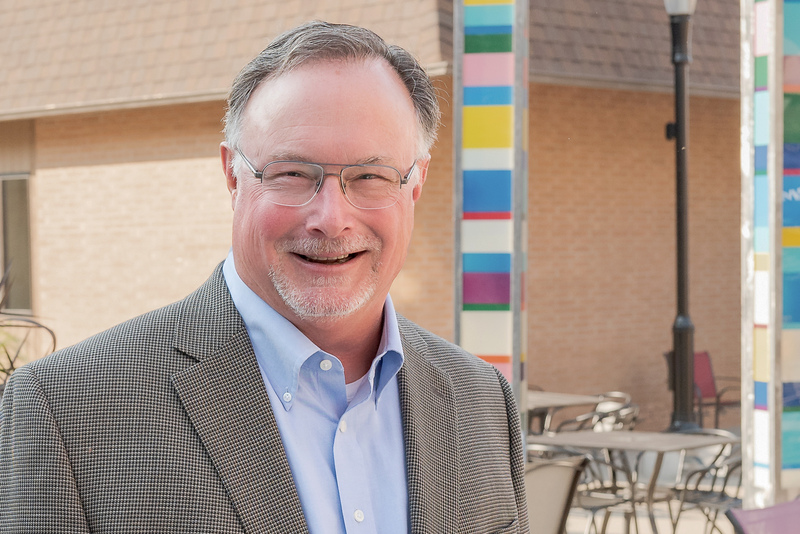


I began my career as a science educator, teaching at Norway High School and Linn-Mar High School from 1977 to mid-1985. Then, I made a significant career change by joining Iowa Electric, the predecessor to Alliant Energy, where I helped manage emergency planning for the Duane Arnold Energy Center. Subsequently, I worked with large industrial customers in the Cedar Rapids metro area.
In 1998, I joined Pearson Education in Iowa City. My work there focused on managing large-scale educational testing programs for various state departments of education. Ultimately, I transitioned to leading teams in business continuity, information security, and program quality management, a role I held until my retirement in 2016.
I will focus on three key priorities to ensure Marion remains a great place to live: 1) Be responsive to residents. I will listen to residents' concerns and take appropriate action accordingly. 2) Ensure fiscal responsibility. I will advocate for a balanced approach to city spending, investing in new development and amenities while maintaining our existing infrastructure and services. 3) Strengthen emergency services. I will work to ensure our emergency response capabilities are the best they can be.
Expansion of the commercial tax base to alleviate pressure on residential property taxes is a top-priority issue. Fostering economic development efforts to achieve that objective, while maintaining control of operational costs for the critical services and amenities our residents expect, is a critical focus. However, as I have discovered, for a city the size of Marion, there is a robust portfolio of “top issues” that vie for #1 priority at any given time. Effective continuity of governance requires attention to multiple top-tier issues.
Broadly speaking, I advocate for the following actions to be emphasized within the business culture of the City enterprise as part of routine operations, and certainly during such times when budget cuts are required.
First, we must continue to emphasize the City's zero-based budgeting approach, which justifies all spending on an annual basis from scratch. This must be paired with an ongoing effort to identify and implement new budget reduction opportunities, including a review of our organizational structure. For example, the City's recent merger of its engineering and public services departments into a new, unified Public Works department exemplifies this strategy.
Second, each City department should continuously undergo a "confirmation of mission" to distinguish mandatory services from those that are optional, potentially identifying areas for elimination. And finally, we must persistently examine our core business processes to identify improvements that reduce costs, optimize staff engagement, and improve delivery times.
These efforts must always be balanced against the essential needs of our residents, as identified through our biennial community surveys. As noted above, these actions should be routine and not limited to times of budget cuts.
The City Council has a history of supporting housing projects for workforce development and income-restricted residents. I support the ongoing effort to incentivize the development of various housing types that meet the needs of a wide range of income levels.
To drive population and business growth, we must continue making Marion the best place to live, work, and raise a family. Achieving this requires creating a "Hometown Marion" environment with the right services, amenities, and opportunities.
This effort depends on a collaborative "Team Marion" approach, uniting City leaders, the Chamber of Commerce, the Marion Economic Development Corporation, and the Marion and Linn-Mar school districts, while actively engaging with residents. Everything we do as Council, in a fiscally responsible manner, must support such efforts recommended by “Team Marion” to drive positive interest and growth in Marion. I believe wholeheartedly in that approach and philosophy.
Located in immediate proximity to Marion’s growth footprint, the Cedar Rapids/Linn County Solid Waste Agency's landfill is a vital resource for Linn County’s businesses and residents. It is a "cornerstone of necessity" for our regional economic development.
Significantly, the 2008 flood and the 2020 derecho have accelerated the landfill's projected closure date from 2044 to 2036. The likelihood of future natural disasters means we must act now to conserve as much of its remaining capacity as possible.
To optimize the landfill’s lifespan, we need to aggressively explore and implement technologies and strategies that reduce the volume of landfilled waste and divert materials that can be reprocessed, thereby helping to preserve capacity. We must also improve visibility into the landfill’s management and operations to optimize its long-term viability and planning for its eventual closure.
The City Council was right to pause the $40 million aquatic center project. I support moving forward, but only with a more strategic approach.
In agreement with the theme that Marion is the best place to raise a family, we need to confirm with our residents what they truly need in a new aquatic center. Based on their feedback, we should transform this into a modular project, building the facility in phases over 5 to 10 years. This approach will allow us to manage costs and operational demands incrementally, with ongoing adjustments to meet the community’s evolving needs.
Additionally, the update of Willowood Park is becoming urgent. If a system failure forces the current pool to close, we must be prepared to quickly modernize the park to continue serving that area's neighborhoods.
